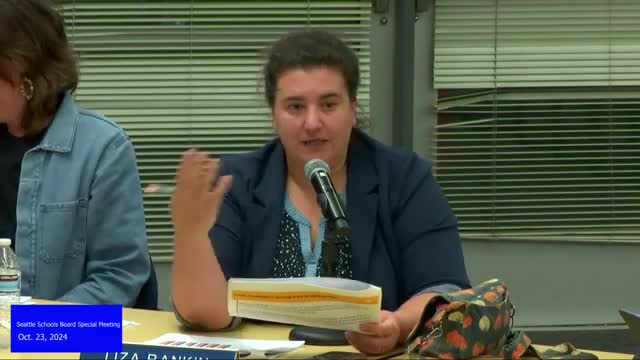School Board Faces Pressure to Address Educational Inequities
October 24, 2024 | Seattle School District No. 1, School Districts, Washington
This article was created by AI summarizing key points discussed. AI makes mistakes, so for full details and context, please refer to the video of the full meeting. Please report any errors so we can fix them. Report an error »

During a recent government meeting, board members engaged in a critical discussion about the effectiveness of current educational strategies and resource allocation aimed at supporting students in poverty. The conversation highlighted a significant gap in monitoring the outcomes of various programs and grants, with concerns raised that the board has not been adequately tracking whether these initiatives are making a tangible difference for the students who need it most.
One board member emphasized the necessity of realigning efforts and resources, particularly Title I funds, to address educational disparities. The discussion underscored the importance of progress monitoring to ensure that financial allocations are directly linked to the district's goals for educational equity. The board was urged to focus on whether their budget reflects their objectives and whether the strategies in place are effectively supporting students from marginalized demographics.
Another director expressed a sense of validation regarding the intertwined nature of race and economics in education, acknowledging that systemic issues contribute to the challenges faced by students in poverty. While recognizing that the school district cannot solve poverty, the director stressed the importance of addressing these disparities within the educational framework.
The meeting concluded with a call for clarity and potential revisions to the district's goals, emphasizing the need for ongoing dialogue and reflection on the effectiveness of their strategies in promoting educational justice.
One board member emphasized the necessity of realigning efforts and resources, particularly Title I funds, to address educational disparities. The discussion underscored the importance of progress monitoring to ensure that financial allocations are directly linked to the district's goals for educational equity. The board was urged to focus on whether their budget reflects their objectives and whether the strategies in place are effectively supporting students from marginalized demographics.
Another director expressed a sense of validation regarding the intertwined nature of race and economics in education, acknowledging that systemic issues contribute to the challenges faced by students in poverty. While recognizing that the school district cannot solve poverty, the director stressed the importance of addressing these disparities within the educational framework.
The meeting concluded with a call for clarity and potential revisions to the district's goals, emphasizing the need for ongoing dialogue and reflection on the effectiveness of their strategies in promoting educational justice.
View full meeting
This article is based on a recent meeting—watch the full video and explore the complete transcript for deeper insights into the discussion.
View full meeting
